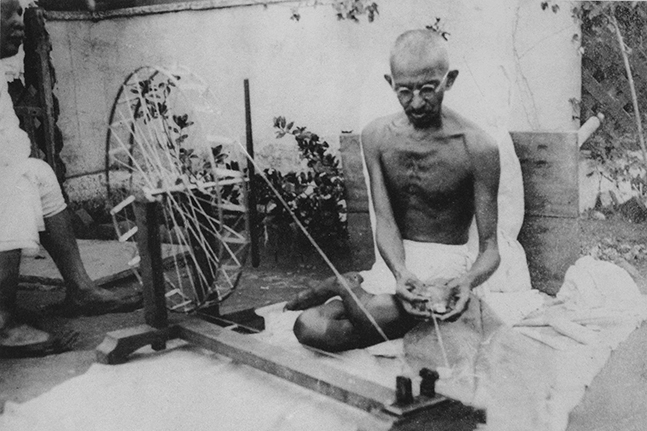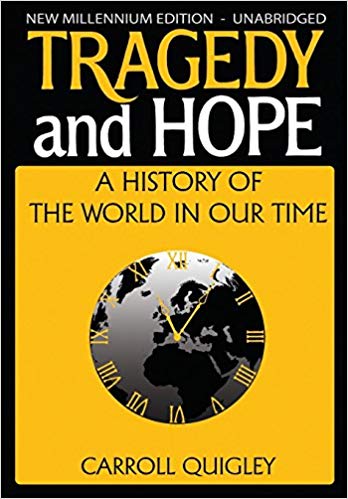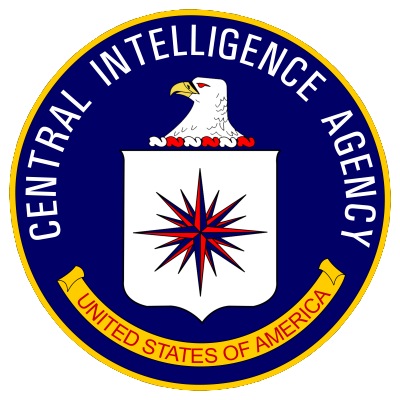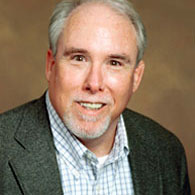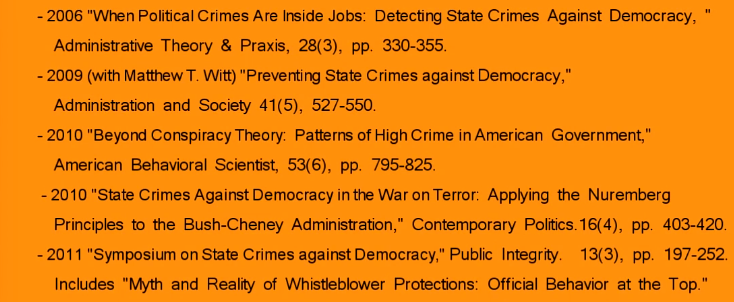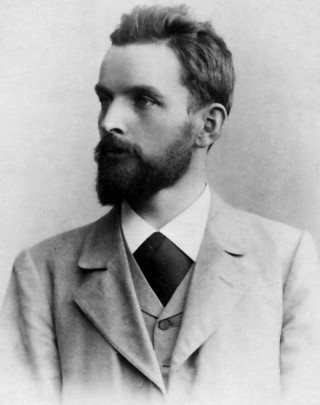(Source: conspiracytheories.eu)
92Wilson, Warner, Larry Dennis, and Allen P. Wadsworth Jr. “‘Authoritarianism’ of the Left and the Right.” Bulletin of the Psychonomic Society, vol. 7, no. 3, 1976, pp. 271-74. SpringerLink, doi.org/10.3758/BF03337186.Winiewski, Mikolaj, Soral Viktor, and Michał Bilewicz. “Conspiracy Theories on the Map of Stereotype Content: Survey and Historical Evidence.” The Psychology of Conspiracy: A Festschrift for Miroslaw Kofta, edited by Michał Bilewicz, Aleksandra Cichocka, and Wiktor Soral, Routledge, 2015, pp. 23-42.Winston, Andrew S. “The ‘Hidden Hand’”: Notes on the Perpetuation of Jewish Conspiracy Theories.” Clio’s Psyche, vol. 7, no. 3, 2000, pp. 136-38.Winter, Aaron. “My Enemies Must Be Friends: The American Extreme Right, Conspiracy Theory, Islam, and the Middle East.” Conspiracy Theories in the United States and the Middle East: A Comparative Approach, edited by Michael Butter and Maurus Reinkowski, De Gruyter, 2014, pp. 35-58. Linguae & Litterae 29.Wippermann, Wolfgang. Agenten des Bösen: Verschwörungstheorien von Luther bis heute[Agents of Evil: Conspiracy Theories from Luther until Today]. be.bra-Verlag, 2007.Wisnicki, Adrian S. Conspiracy, Revolution, and Terrorism from Victorian Fiction to the Modern Novel. Routledge, 2008. Literary Criticism and Cultural Theory. Wood, C., and W. M. L. Finlay. “British National Party Representations of Muslims in the Month after the London Bombins: Homogeneity, Threat, and the Conspiracy Tradition.” The British Journal of Social Psychology, vol.47, no. 4, 2008, pp. 707-26. Wiley Online Library, doi.org/10.1348/014466607X264103.Wood, Gordon S. “Conspiracy and the Paranoid Style: Causality and Deceit in the Eighteenth Century.” The William and Mary Quarterly, vol.39, no. 3, 1982, pp. 402-41. JSTOR, www.jstor.org/stable/1919580.—. The Creation of the American Republic, 1776-1787. U of North Carolina P, 1998.Wood, Michael J. “Conspiracy Suspicions as a Proxy for Beliefs in Conspiracy Theories: Implications for Theory and Measurement.” British Journal of Psycholgy, vol.108, no. 3, 2017, pp. 507-27.Wiley Online Library, doi.org/10.1111/bjop.12231.—. “Some Dare Call It Conspiracy: Labeling Something a Conspiracy Theory Does Not Reduce Belief in It.” Political Psychologyvol. 37, no. 5, 2016, pp. 695-705. Wiley Online Library, doi.org/10.1111/pops.12285.Wood, Michael J., and Karen M. Douglas. “Online Communication as a Window to Conspiracist Worldviews.” Frontiers in Psychology, vol.6, art. 836, 2015, pp. 1-8. Frontiers in Psychology, doi.org/10.3389/fpsyg.2015.00836.—. “‘What about Building 7?’ A Social Psychological Study of Online Discussion of 9/11 Conspiracy Theories.” Frontiers in Psychology, vol.4, art. 409, 2013, pp. 1-9. Frontiers in Psychology, doi.org/10.3389/fpsyg.2013.00409.Wood, Michael. J., Karen M. Douglas, and Robbie. M. Sutton. “Dead and Alive: Beliefs in Contradictory Conspiracy Theories.” Social Psychological and Personality Science, vol.3, no. 6, 2012, pp. 767-73. SAGE Journals, doi.org/10.1177/1948550611434786.Woods, Jeff R. Black Struggle, Red Scare: Segregation and Anti-Communism in the South, 1948-1968. Louisiana State UP, 2003. American History.Woodward, Mark. “Rumors, Religion, and Political Mobilization: Indonesian Cases, 1965-1998.” Rumor and Communication in Asia in the Internet Age, edited by Greg Dalziel, Routledge, 2013, pp. 94-106. Media, Culture and Social Change in Asia 32
93Wulff, Erich. “Paranoic Conspiratory Delusion.” Changing Conceptions of Conspiracy, edited by Carl F. Graumann and Serge Moscovici, Springer, 1987, pp. 171-89.Würgler, Andreas. “Conspiracy and Denunciation: A Local Affair and Its European Public (Bern, 1749).” Cultures of Communication from Reformation to Enlightenment: Constructing Publics in the Early Modern German Lands, edited by James van Horn Melton, Ashgate, 2002, pp. 119-31.Wyler, Helen, and Margit E. Oswald. “Why Misinformation Is Reported: Evidence from a Warning and a Source-Monitoring Task.” Memory, vol. 24, no. 10, 2016, pp. 1419-34. Taylor & Francis Online, doi.org/10.1080/09658211.2015.1117641.Yablokov, Ilya. “Conspiracy Theories as a Russian Public Diplomacy Tool: The Case of Russia Today(RT).” Politics, vol. 35, no. 3-4, 2015, pp. 301-15.SAGE Journals, doi.org/10.1111/1467-9256.12097.—. “Feinde, Verräter, fünfte Kolonnen: Verschwörungstheorien in Russland” [“Enemies, Traitors, Fifth Columns: Conspiracy Theories in Russia”]. Osteuropa, vol. 65, no. 4, 2015, pp. 99-114.—. Fortress Russia: Conspirac Theories in the Post-Soviet World. Polity, 2018.—. “Pussy Riot as Agent Provocateur: Conspiracy Theories and the Media Construction of Nation in Putin’s Russia.” Nationalities Papers, vol. 42, no. 4, 2015, pp. 622-36.Taylor & Francis Online, doi.org/10.1080/00905992.2014.923390. —. “Social Networks of Death: Conspiracy Panics and Professional Journalistic Ethics in the Post-Soviet Russia.” Les theories du complot à l’heure du numérique[Theories of Conspiracy in the Digital Age], special issue of Quaderni, vol. 94, pp. 53-62. OpenEdition, journals.openedition.org/quaderni/1113.—. “Why Are Russia’s Journalists So Prone to Conspiracy Theory?” Opendemocracy.net, 9 May 2016, www.opendemocracy.net/od-russia/ilya-yablokov/why-are-russia-s-journalists-so-prone-to-conspiracy-theory. Yusuf, Huma. “Conspiracy Fever: The US, Pakistan and its Media.” Survival, vol.53, no. 4, 2011, pp. 95-118. Taylor & Francis Online, doi.org/10.1080/00396338.2011.603564.Zaller, John R. The Nature and Origins of Mass Opinion. Cambridge UP, 1992. Cambridge Studies in Public Opinion and Psychology.Zaller, John R., and Stanley Feldman. “A Simple Theory of the Survey Response: Answering Questions versus Revealing Preferences.” American Journal of Political Science, vol. 36, no. 3, 1992, pp. 579-616. JSTOR, doi.org/10.2307/2111583.Zantides, Evripides. “Cyprus and Conspiracy Theories after the Troika Levy in 2013.” Complotto [Conspiracy], edited by Massimo Leone, special issue of Lexia: Revisita di Semiotica [Journal of Semiotics], vol. 23-24, 2016, pp. 245-56.Zdybel, Lech. Idea Spisku i Teorie Spiskowe w Świetle Analiz krytycznych i Badań Historycznych[Conspiracy and Conspiracy Theories in the Light of Critical Analyses and Historical Research]. UMCS, 2002.—. “Теорія Змови у Політичній Міфології Сучасності” [“The Conspiracy Theory in Political Mythological Modernity”]. Громадянське Суспільство як Здійснення Свободи, vol.3, 2006, pp. 169-83.Zeineddine, Fouad Bou, and Felicia Pratto. “Political Distrust: The Seed and Fruit of Popular Empowerment.” Power, Politics, and Paranoia: Why People Are Suspicious of Their Leaders, edited by Jan-Willem van Prooijen and Paul A. M. van Lange, Cambridge UP, 2014, pp. 106-29.Cambridge Core, doi.org/10.1017/CBO9781139565417.010.Zelizer, Barbie. Covering the Body: The Kennedy Assassination, the Media, and the Shaping of Collective Memory. U of Chicago P, 1992.
94Zernike, Kate. “The Persistence of Conspiracy Theories.” The New York Times, 30 April 2011, www.nytimes.com/2011/05/01/weekinreview/01conspiracy.html.Ziolkowski, Theodore. Lure of the Arcane: The Literature of Cult and Conspiracy. Johns Hopkins UP, 2013.Zollo, Fabiana, et al. “Debunking in a World of Tribes.” PLOS ONE, vol. 12, no. 7, 2017, pp. 1-27. PLOS ONE, doi.org/10.1371/journal.pone.0181821. —. “Emotional Dynamics in the Age of Misinformation.” PLOS ONE, vol. 10, no. 9, 2015, pp. 1-22. PLOS ONE, doi.org/10.1371/journal.pone.0138740. Zonis, Marvin, and Craig M. Joseph. “Conspiracy Thinking in the Middle East.” Political Psychology, vol.15, no. 3, 1994, pp. 443-59. JSTOR, www.jstor.org/stable/3791566.Zukier, Henri. “The Conspiratorial Imperative: Medieval Jewry in Western Europe.” Changing Conceptions of Conspiracy, edited by Carl F. Graumann and Serge Moscovici, Springer, 1987, pp. 87-103.Zwierlein, Cornel. “Security Politics and Conspiracy Theories in the Emerging European State System (15th/16th c.).” Security and Conspiracy in History, 16th to 21st Century, special issue of Historical Social Research/Historische Sozialforschung, vol. 38, no. 1 (143), 2013, pp. 69-95. JSTOR, www.jstor.org/stable/23644491.Zwierlein, Cornel, and Beatrice de Graaf. “Security and Conspiracy in Modern History.” Security and Conspiracy in History, 16th to 21st Century, special issue of Historical Social Research/Historische Sozialforschung, vol. 38, no. 1 (143), 2013, pp. 7-45.JSTOR, www.jstor.org/stable/23644489.

